
But there comes a time when his mind becomes inwardly steadied,
settled, unified, and composed. That composure is then calm, and refined.
It has attained to full tranquility, and achieved unification.
It is not maintained by strenuous suppression of the defilements.
Then, to whatever factor realizable by direct knowledge he directs his mind,
he achieves the capacity of realizing that factor by direct knowledge,
whenever the necessary conditions obtain. (AN 3.101)
The Buddha’s meditation teachings
home > study & practice > meditation
The English word “meditation” has two meanings that often, but not necessarily coincide. The distinction between these two meanings of ‘meditation’ helps us sort out early Buddhist meditative practices.
The first meaning of meditation is more or less synonymous with “contemplation,” “reflection,” or “rumination,” and essentially involves fixing on some theme and trying to get to the bottom of it. For instance, in Buddhism mettā (kindness) meditation, insight (vipassanā, or satipaṭṭhāna, often called “mindfulness”) meditation are contemplative practices. The themes of these contemplations typically belong to wisdom or ethics, the main concerns of the first five factors in the noble eightfold path. Mettā contemplation belongs properly to right intention, and vipassanā contemplation to right view.
The other meaning of “meditation” includes altered states of mind, mystical experiences or trance-like states, and is associated most commonly with religious experience, the use of mind-altering substances, or with secularized yoga practices. In early Buddhism, altered states of mind are represented in samādhi, and in jhāna (in the technical sense of progressive stages of samādhi). Samādhi translates literally as “composure” or “collectedness,” suggesting orderliness in the progression of states found in Buddhist practice. Samādhi arises in a very wide variety of contexts in the early texts, and in association with a variety of practices. Most typically samādhi arises in association with contemplative practices, but the two arise independently of each other as well.
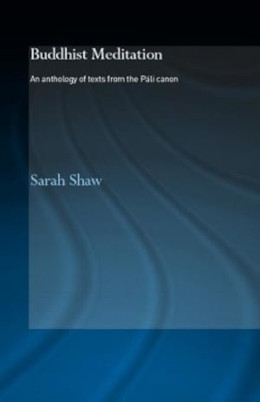
Sarah Shaw, 2008, Buddhist Meditation: An anthology of texts from the Pali Canon, Routledge.
This book is an excellent overview of the early teachings on meditation. It is important for the student of early Buddhism to understand what the Buddha taught in this regard, because many meditation teachings are attributed to him in later traditions that have no basis in the early texts
1. Faculties
Samādhi is the eighth factor of the noble eightfold path, and—along with the sixth and seventh factors (effort and recollection)—is categorized as a “faculty” (indriya), or “strength” (bala). This category indicates the roles of these final steps on the path as “enablers” of other, “primary” practice tasks, much as the faculty of vision enables you to gaze at stars, or as the faculty of reason enables you to outsmart a squirrel who is pilfering your bird feeder. In particular, these faculties optimize the performance of the first five steps on the path, by ensuring full, ordered engagement in the practice of Dhamma.
For instance, in the practice of “guarding the senses” in order to control greed (a right action practice), right effort resists the temptation to cheat (taking a peek or taste). Right recollection plays an executive role in keeping the Dhamma teachings about guarding the senses attentively in mind as you choose how to act in the present setting. Samādhi regulates the cognitive faculties to avoid distractions and to base the practice less on deliberate thinking, and more on trained dispositions to take up the slack.
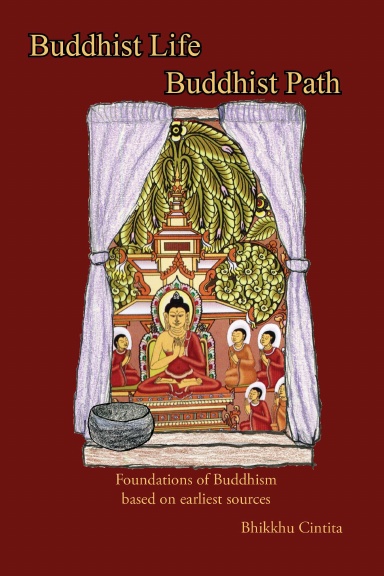
Bhikkhu Cintita, 2019, Buddhist Life/Buddhist Path: foundations of Buddhism based on earliest sources.
Chapter ten of my comprehesive introduction disusses the faculties, including samādhi. My book Rethinking Satipaṭṭhāna, described below, has a more thorough discussion of samādhi from a scholarly perspective.

| 
|
2. The function of samādhi
The process of samādhi begins with the centering of attention around the current primary practice task, and is followed by a progressive “curtailment” of cognitive faculties to optimize the task at hand. What makes curtailment significant is that training in any task alters the nature of the task: we start out by performing the task with strong reliance of conceptual, conscious thought and deliberation, which modern research demonstrates to be extremely slow and cumbersome; the brain demonstrably consumes high levels of glucose. This is “extrinsic cognition.” Eventually, though repetition, the performance becomes mastered and internalized, so that it achieved almost exclusively through largely non-conceptual, unconscious, trained dispositions, extremely quickly and effortlessly, with an adeptness missing in the early stages of training. This is “intrinsic cognition.”
You can verify yourself the difference between extrinsic and intrinsic cognition by considering how you learned to drive a car. As the worldling (untrained in Buddhist practice) masters a skill, extrinsic cognition plays a reduced role in the task at hand but does not go away. Rather it becomes distracted, or available for multitasking or for mind-wandering. Samādhi is an alternative to distraction, multitasking, and mind-wandering, so that it remains optimally engaged in the task at hand: it “curtails” the operation of extrinsic faculties as they are no longer needed to perform the primary practice task. Without the operation of the extrinsic faculties, the performance of the task becomes effortless, fast, fully engaged, and moreover its results are optimized. The progressive curtailment of extrinsic factors differentiates samādhi into the four jhānas. Samādhi itself is a skill to be mastered over many years of training to enable success in advanced Buddhist practices.
3. Practice meditation!
For the Buddha samādhi is a specific kind of experience with specific origins, but belongs to a much larger class of meditation practices that are quite popular in the modern world, and found to be beneficial even for beginners. Its altered states of mind can be experience quite readily by choosing very simple primary tasks, such as observing breath. I recommend that everyone take up meditation of some kind—Buddhist or not, beginner or not—as a remedy for the stress, tumult, noise, and distractions of the modern world.
Meditative experience will also give an immediate sense of the capabilities of the human mind, and thereby inspire further Buddhist study and practice. Moreover, sharing the experience of sitting for many hours in meditation together with like-minded people has become the primary modern basis for a sense of community in the Buddhist community. The accrued training in meditation over many years will be readily adapted to advanced practice when you get there. Keep in mind that samādhi is a faculty that enables primary Buddhist practices of ethics and wisdom; it is not the end-all and be-all of Buddhist practice in itself. Meditation groups abound. I highly recommend finding one near you, Buddhist or Hindu (yoga), or starting one with friends. Find an instructor, or failing that, find instruction online.
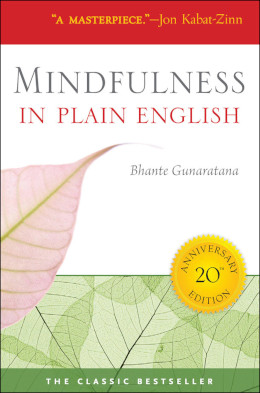
Bhante Gunaratana, 2002, Mindfulness in Plain English, Buddhist Publication Society.
Available in many editions, the is probably the most popular Buddhist meditation text in the English language, full of practical advice.
4. Dhamma investigation
Satipaṭṭhāna is the most sophisticated of the contemplative wisdom practices, highlighted in the early texts as necessary for fulfilling “knowledge and vision of things as they are,” an immediate skillful apprehension of the world of experience, and an immediate precursor to awakening. It is the practice of verifying, investigating and internalizing Dhamma teachings in terms of direct experience. The integration of samādhi is critical to full engagement and to the success of making the apprehension of Dhamma second-nature, a function of intrinsic cognition.
The word satipaṭṭhāna is most commonly translated as ‘foundations of mindfulness.’ The word translates more literally as ‘recollection-attentiveness,’ in reference to keeping the Dhamma in mind, and skillful engagement with present experience. I prefer to translate it as ‘investigation of Dhamma,’ as descriptive of its primary function.
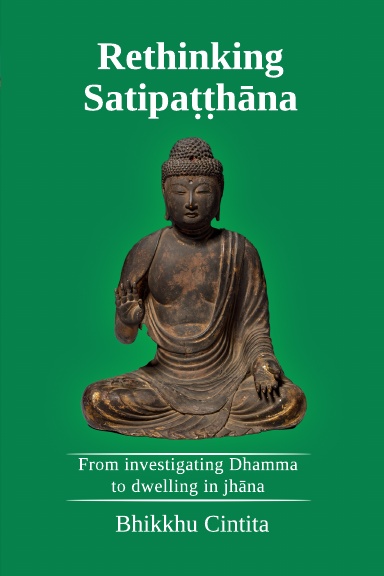
Bhikkhu Cintita, 2025, Rethinking Satipṭṭhāna: from investigating Dhamma to dwelling in Jhāna.
This is a scholarly work that justifies a particular way of interpreting the Buddha’s interpretation of both Dhamma investigation and composure (samādhi). In fact, it gives more-or-less equal weight to each. This book gives a lot of attention to its confirmation in terms of modern cognitive science, in particular of skill acquisition, and the essential role of unconscious intuition in the practice of complex tasks.

| 
|
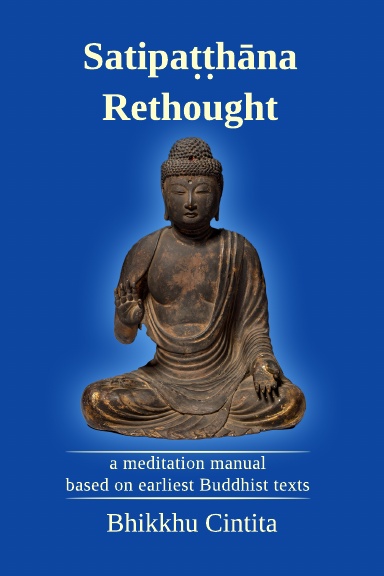
Bhikkhu Cintita, 2024, Satipṭṭhāna Rethought: a meditation manual based on earliest Buddhist texts.
This is a nuts-and-bolts meditation manual, based on the Satipatthana Sutta, the Buddha’s tutorial on Dhamma investigation. It incorporates both Dhamma contemplation and samādhi, and carefully interprets the twenty-one exercises, and the recurring refrain for the practitioner. The interpretation is substantiated in Rethinking Satipṭṭhāna.

| 
|